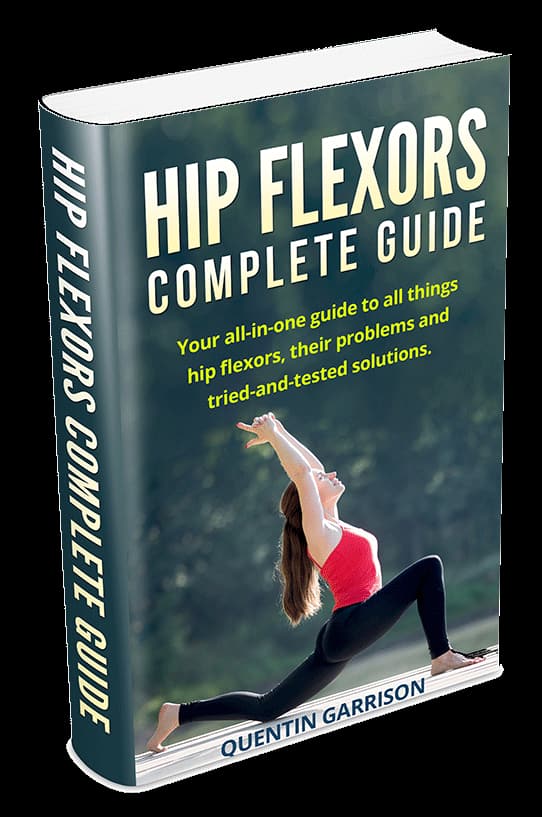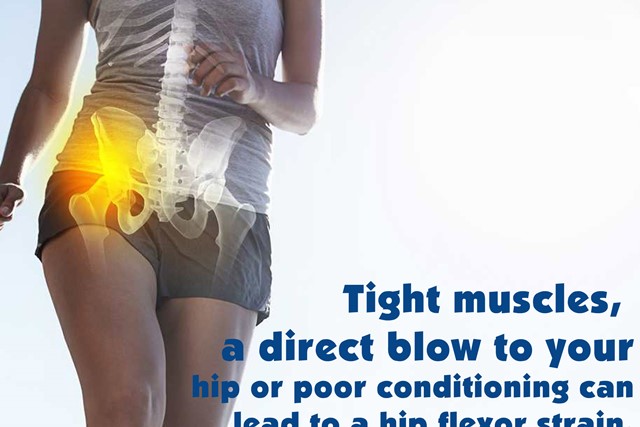
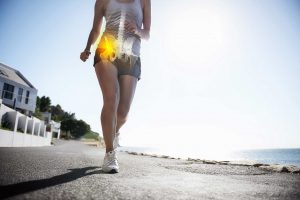
Your hip flexors are the muscles that comprise the front of your hip; you use them when you bend your hip, run or kick. Your hip flexors are susceptible to pain or injury if you place excessive or repetitive stress on them. Read How to Get Rid of Hip Flexor Pain.
Hip flexor pain is often the result of strains that occur when your hip flexor muscles sustain tears.
Within a few minutes, you’ll receive your log-in details and you can immediately dive in and start reading the reports and watching the videos.
Unlock Your Hip Flexors Revamped For 2020!
hip flexor pain symptoms
hip and relief Tight muscles, a direct blow to your hip or poor conditioning can lead to a hip flexor strain. While hip flexor pain should be examined by a physician, there are actions you can take to help get rid of hip flexor pain. You can also reduce your risk of hip flexor pain if you read more….
cb
Hip flexor pain when walking
Hip flexor pain may develop gradually or appear following a trauma, such as a fall. Many people with hip flexor pain report one or more of the following:
Symptoms of a hip flexor strain:
- Pain in the front of the hip or in the groin
- Pulling sensation in the front of the hip or in the groin
- Pain, tenderness, and weakness when walking or climbing stairs
- Pain when lifting the knee toward the chest
- Swelling and inflammation
- A limp while walking
- A visible muscle deformity
- Constant aching pain or discomfort in the groin or hip, even when sitting
- Decreased range of motion that is especially noticeable when kicking, lunging, running, and bending
- Tenderness, swelling, and bruising in the upper leg or groin; the affected area may hurt when pressed
- Muscle spasms and/or cramping in the hip or thigh that are painful and affect movement
- Weakness in the groin region that may make certain activities, such as kicking, difficult or impossible
- Change in gait, because of pain, decreased range of motion, and other factors affect walking
Hip flexor pain treatment
hear your answer of How to Get Rid of Hip Flexor Pain, Most instances of hip flexor strain can be treated at home without the need for prescription medications or more invasive treatments. Here are some home remedies that can help relieve the pain of hip flexor strain:
Some common ways to help treat hip flexor strain are:
- A hot shower or bath.
- Resting the muscles to help them to heal while avoiding activities that could cause further strain.
- Applying an ice pack to the affected area. These are available to buy in pharmacies or online.
- Applying a heat pack to the affected area. These are available to buy in pharmacies or online.
- Wearing a compression wrap around the area. These are available to buy in pharmacies or online.
- Over-the-counter pain relievers, such as ibuprofen (Advil, Motrin), acetaminophen (Tylenol), naproxen sodium (Aleve).
- Rest and avoid activities that will overuse your hip flexors for 10 to 14 days after injury (or longer if directed by your doctor).
When taking these medicines, it is important to follow the instructions and not to use them for more than 10 days.
If the pain persists after 10 days, a person may wish to make an appointment with their doctor to discuss alternative treatments.
Hip flexors exercises
Exercise and Stretching: In order to minimize the risk of a strain, always stretch properly before doing any kind of exercise.
Try these hip flexor stretches, but make sure you don’t push too hard — these stretches should be gentle. Stretch slowly and hold the position to ensure that your muscles are adequately flexible.
The following stretches will help reduce the risk of a hip flexor injury.
- Start standing with your feet together.
- Bend your left knee and drop into a lunge, keeping your right leg straight behind you with your toes on the ground, so you feel a stretch at the front of your right thigh.
- Take a big step forward with your left foot, so that you are in a staggered stance.
- Place your right hand on the floor and twist your upper body to the left as you extend your left arm toward the ceiling.
- Hold for 30 seconds to 2 minutes.
- Repeat on the other side.
Seated Butterfly
- Assume a seated position with your feet together in front of you and your knees bent to the side. Keep your back straight, shoulders down, and abs tight.
- Bend forward from the hips until you feel tension. Hold the position for 30 seconds.
- Return to the starting position.
Lunge
- Assume a standing position with your body straight, shoulders back and relaxed, chin up, and your abs tightened.
- Step forward with one leg, lower your hips until both knees are bent at about a 90-degree angle. Make sure your front knee is directly above your ankle. Do not let the pelvis tilt forward.
- Squeeze the glute of the rear leg. Drive the knee back into the ground while having the hip sink down and forward.
- Return to the starting position and repeat the stretch with your other leg.
Kneeling Stretch
- Put your hands on your right knee and keep your back straight.
- Kneel with your left knee on the floor and your right leg at a 90-degree angle in front of you.
- Keeping your left knee pressed to the floor, lean forward into your right hip while squeezing the muscles in your left buttocks.
- Hold for 30 seconds. Repeat on the other side.
Knee to Chest Stretch
- Lie on your back with both legs extended.
- Pull your right knee into your chest, while keeping the left leg straight and your lower back pressed into the floor.
- Hold for 30 seconds to 2 minutes.
- Repeat on the other leg.
Stretches lower back, hips, hamstrings
Piriformis Stretch
- Sit on the floor with both legs extended in front of you.
- Cross your right leg over your left, and place your right foot flat on the floor.
- Place your right hand on the floor behind your body.
- Place your left hand on your right quad or your left elbow on your right knee (as shown) and press your right leg to the left as you twist your torso to the right.
- If the spinal rotation bothers your back, take it out and simply use your left hand to pull your right quad in and to the left.
Stretches hips, back, glutes
Standing Stretch
- Bend your right knee, and bring your right heel up toward your butt.
- Stand with your feet hip-width apart and toes forward.
- Hold your right foot with the right hand, and gently pull to point your knee toward the floor. You can hold on to a counter or chair with your left hand for balance.
- Hold for 30 seconds. Repeat on your other leg.
Forearm Plank
- Assume a push-up position using your forearms instead of your hands. Lower your hips while keeping your body straight from shoulders to ankles.
- Tighten your abs and squeeze your glutes. Hold the position for 15 to 30 seconds while breathing deeply.
- Release, pause, and repeat.
90/90 Stretch
- Sit with your right knee bent at 90-degrees in front of you, calf perpendicular to your body and the sole of your foot facing to the left. Keep your right foot flexed.
- Let your leg rest flat on the floor.
- Place your left knee to the left of your body, and bend the knee so that your foot faces behind you. Keep your left foot flexed.
- Keep your right butt cheek on the floor. Try to move the left cheek as close to the floor as possible. It may not be possible if you’re super tight.
- Hold for 30 seconds to 2 minutes.
- Repeat on the other side.
Dead bug
This exercise will engage the hip flexors and improve core strength:
- Begin by lying flat on the ground with your arms relaxed on either side of your body.
- Raise both legs so that they are at a 90-degree angle with the floor. Keep your back flat on the ground.
- Extend one leg forward so that it is just a few inches off the ground while simultaneously raising the opposite arm above your head.
- Return the extended leg and arm to the original position and repeat on the other side.
Perform 10 to 15 reps
It is important to note that hip flexor injuries are not caused by tightness alone. Muscle weakness is also a major risk factor. When muscles are weak they tear more easily. Moreover, other structures in the body must compensate for the weakness.
It can help to reduce the risk for hip flexor strain if you apply moist heat and warm up your muscles with a gentle walk for about three minutes before stretching.
Hip flexor tears or strain complications
Solution for How to Get Rid of Hip Flexor Pain.
If left untreated, hip muscle tears or strains can cause the onset or progression of hip osteoarthritis leading to reduced or loss of mobility.
Hip flexor tear or strain risk factors
Risk factors associated with hip flexor tears and strains include:
- Not properly conditioned
- Muscle imbalances
- Having weak muscles
- Athletes who perform high knee kick athletes during their sport, such as football kickers
- Participating in sports such as running, jumping
Hip flexor tear or strain diagnosis
Your doctor will be able to perform a physical
examination to determine your diagnosis. Your doctor may also order an X-ray or MRI to rule out other possible conditions.
Your doctor will also look back at your medical history to determine when symptoms began and potential activities that might have caused the tears or strain.
Read hip flexor strain test, hip flexor pain location, hip flexor pain stretches in next page for Hip flexor pain relief
Read bellow in FAQ.
FAQ ABOUT UNLOCK YOUR HIP FLEXORS
Visit bellow link:
- How is this different from other hip flexibility programs?
- How long until I see results?
- What if the routine doesn’t work for me?
- Do I need a gym membership or any special equipment?
- See what is reviews peoples about this
Hip Arthritis, Hip Pain Explained book by Robert Rymore.
Osteoarthritis in Hips, Rheumatoid Arthritis in Hips. Including Hip Arthritis Surgery, Hip Flexor Pain, Exercises, Paperback.
Millions of people are suffering from hip arthritis. This is another very informative book by Robert Rymore.
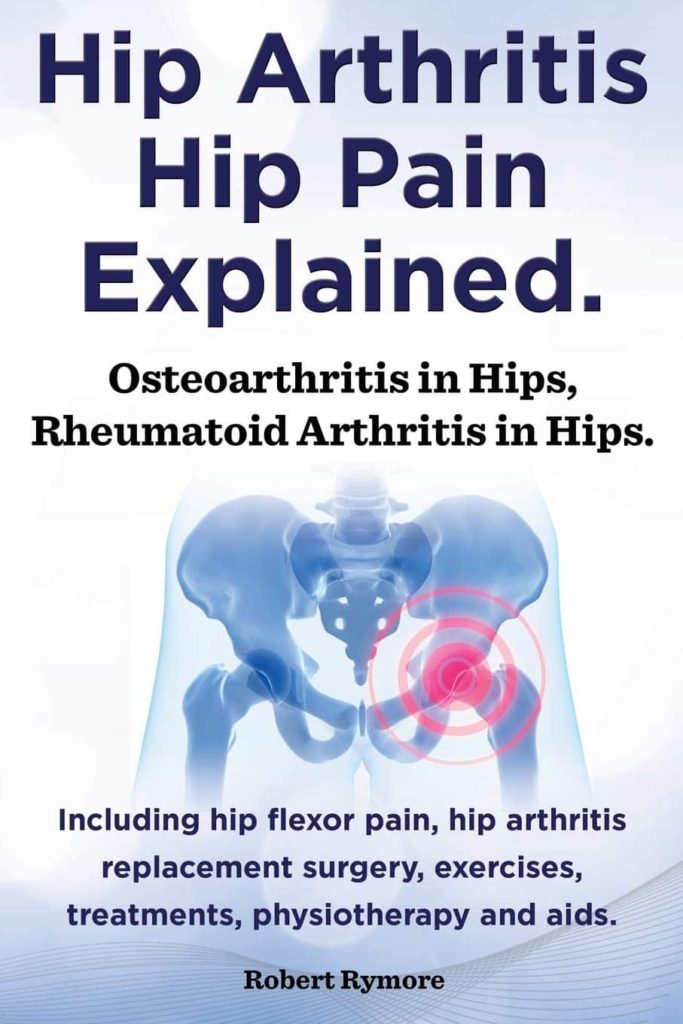
Hip Flexor Pain, Exercises
Free Shipping
The book includes information about hip flexor pain, hip arthritis replacement surgery, exercises, treatments, physiotherapy and aids.
He continues with his interest in writing medical educational guides. This guide is intended to be a tool, one that will give you information and hopefully some pain relief. Readers will surely find much contribution by this book, to relief their pain or even to create a pain free healthy lifestyle.
The book is written in an easy to read and understandable style. In a straightforward, no nonsense fashion, Robert covers all aspects of hip arthritis, including lots of hip exercises.
The content is informative, educative and easy to understand.
Unlock your hip flexors review
Top reviews: Hip Arthritis Book
jane elizabeth roebuck
Reviewed in the United Kingdom
This is an excellent little book, explains in simple terms arthritis, the gentle excersises in the book work, they improve your range of movement if done regularly, it can be a lonely condition, and constant pain to different degrees can lower your mood.Try the book it has helped me.
5 star rating
david
Reviewed in the United Kingdom
this book gave a full meaning of what my mother is going through, right now. it help her explain to the doctors what pain she was/is having.
5 star rating
Tight Hip Flexors in Just 5 Minutes
by Matt Andriano (Author)
Here is how you will learn to relieve the pain of your tight Hip Flexors
- What is Hip Flexion?
- How your Hip Flexors fit into you Anatomy
- What exactly is a Tight Hip Flexor?
- What Causes Tight Hip Flexors?
- How Tight Hip Flexors and Hip Pain go hand in hand
- How Tight Hip Flexors can cause Back Pain
- Why is Stretching so Important?
- How to Stretch properly
- How to assess your flexibility
- What is Static Stretching
- How activities such as Yoga and Pilates can increase hip flexibility
- Specific Static Hip Flexor Stretches (with photos and videos)
- Postural Implications
- Beginning to Exercise: Pain vs. Soreness
- Beginning to Exercise: Commitment
- Plus much more
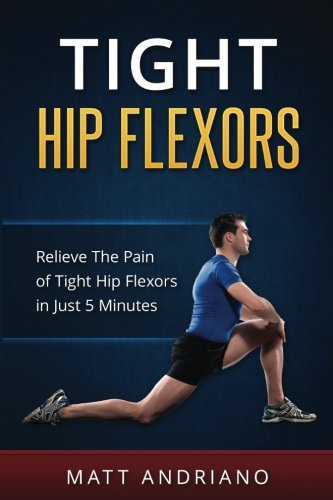
Relieve the Pain of Tight Hip Flexors in Just 5 Minutes
Simple way and all solutions How to Get Rid of Hip Flexor Pain.
Latest Post
- Why Must We Always Strive to Make Our Relationships Work?
- Confidence is Key, and Your Dedication Will Take You Far: A Guide to Personal Growth and Success
- Top 10 Immigration Consultants in Jalandhar
- You Never Truly Lose If You Keep Trying: Embracing the Journey of Growth, Love, and Resilience
- We All Make Mistakes – Be the One to Accept It
